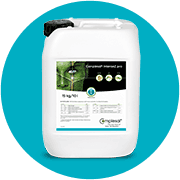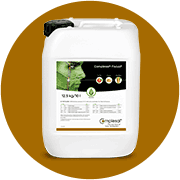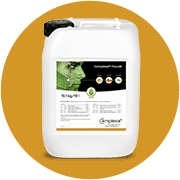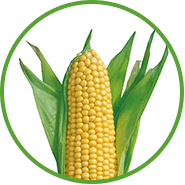
Corn/Maize
Maize is characterized by a relatively short vegetation period, where a sufficient supply of nutrients becomes critical for obtaining high yields. Especially during 4 to 8-leaf stage the root system is only poorly developed so that deficiency problems can frequently occur. Nutrients like N, P, K, B and Zn are crucial for rapid leaf development during young growth, particularly in heavy and cool soils. Foliar fertilization in the youth stage is necessary for development and vitality. It maintains healthy and green foliage to assure assimilation and cob filling.
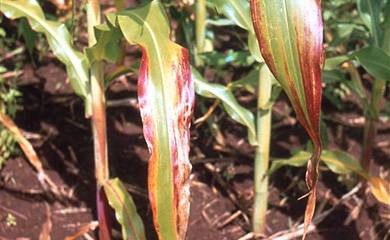
Key nutrients:
Phosphorus is an essential part of different compounds like proteins. It is taking part in the activation of different organic compounds. Deficiency often occurs during cold periods. Steam and leaves are violet or reddish-brown in color. The grains are poorly developed and maturation is delayed.
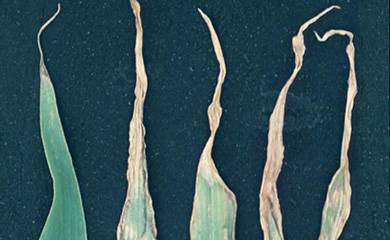
Potassium activates different enzymes. It coordinates the water supply and reduces evaporations (improved drought tolerance and resistance). Cell walls are thicker so that plant stability and resistance against pathogens and diseases are supported. If plants receive sufficient Potassium, they will show a good assimilation performance and a better resistance against frost. Deficiencies express in the form of short internodes. Leaves become yellowish and later brown. They die, starting from the tip and the leaf edge. The cob appears small and newel-shaped with less developed grains at the tip.
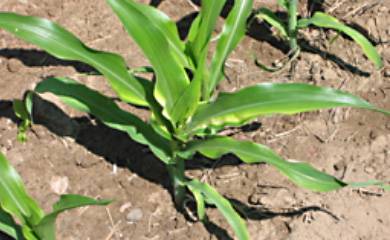
Corn is often deficient in Zinc than in any other micronutrient. The most important functions of Zinc in Corn plants include major roles in photosynthesis, DNA transcription, auxin activity and enzyme reactions. Deficiency often shows in areas on the same field while the whole field is seldom affected completely. Very early Zinc deficiency is mostly a result of cold and wet soil conditions that limit corn root growth and available Zinc. First symptoms show on early leaves. Later in the season deficiencies can be identified when the demand exceeds the supply. Zinc is deficient when the leaves appear with longitudinal stripes, chlorotic and pale in color.
Product recommendation corn/maize

Contact us for more information
Whether you’re interested in more information or just have some questions, we’re here to help. Our experts will be pleased to share their knowledge with you and take care of your request.
